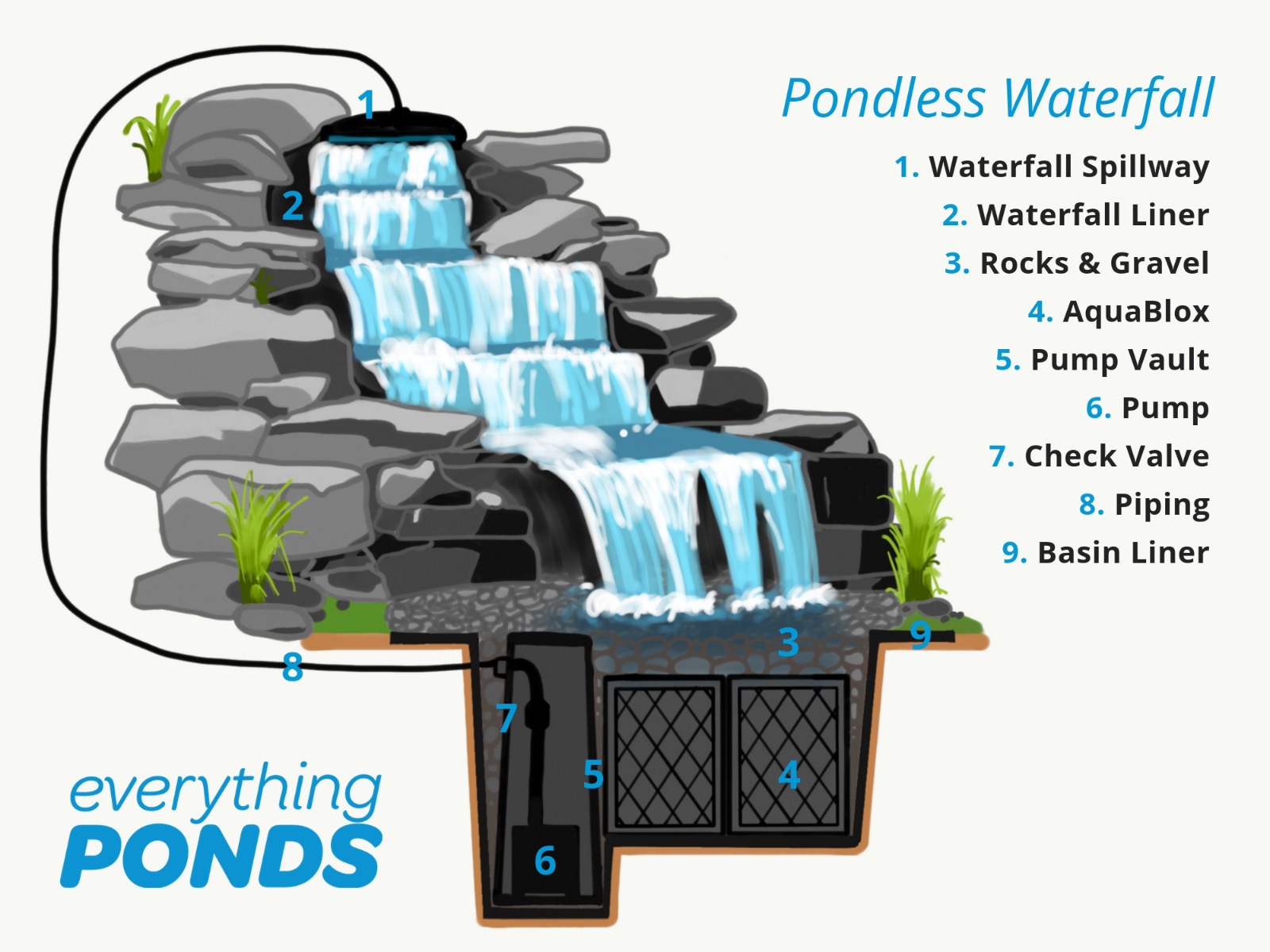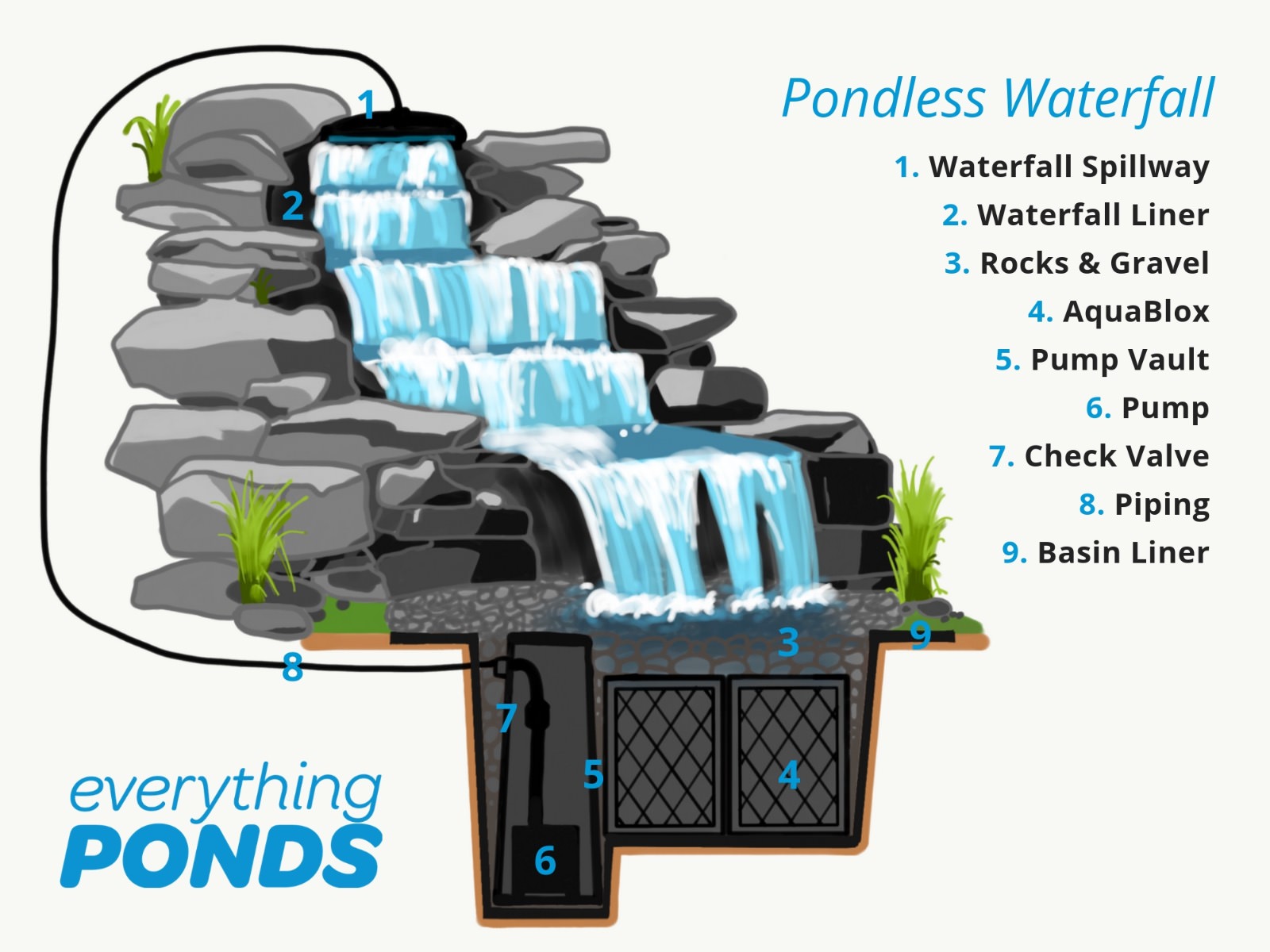Designing a Pondless Waterfall
What is a Pondless Waterfall?
A pondless waterfall is a beautiful, low maintenance way of adding moving water to your landscape without the commitment of building an entire pond! The water flows from a waterfall down a stream and then drops off to disappear into a hidden underground basin. The water is then cycled back up to the waterfall spillway using a hidden submersible pump.
Benefits of a Pondless Waterfall
- Low maintenance - less equipment, less cleaning
- Easy installation when compared to a regular pond
- Adds the sound of flowing water to your landscape
- Increase curb appeal
- No filtration system needed
- Safe for kids and pets to play beside
- Can add a pond in the future
- Uses less power than a pond
- Turn off at anytime as there is no filtration
- Easily winterize the feature by bringing the pump inside
How to Design a Pondless Waterfall
A pondless waterfall is a simple system that can fit into any sized landscape. From adding a small tranquil stream beside your front door, to a gushing waterfall feature in your backyard, with a bit of creativity anyone can install one! The system works by creating an underground basin/pool that is covered by a layer of rocks. This gives the appearance that the water is disappearing into the ground Using a submersible pump located at the lowest point in the basin, the water will cycle up to the waterfall spillway and then back down the stream. The best way to achieve a natural look for this feature is to place the waterfall spillway at a higher elevation than the basin. Be creative in your design by adding plants, rocks, focal points and multiple tiers for the water to spill over. You can even add lights to enjoy the feature at night. Ensure that you set up the water feature so that it can be enjoyed from the angle at which you will look at it most.
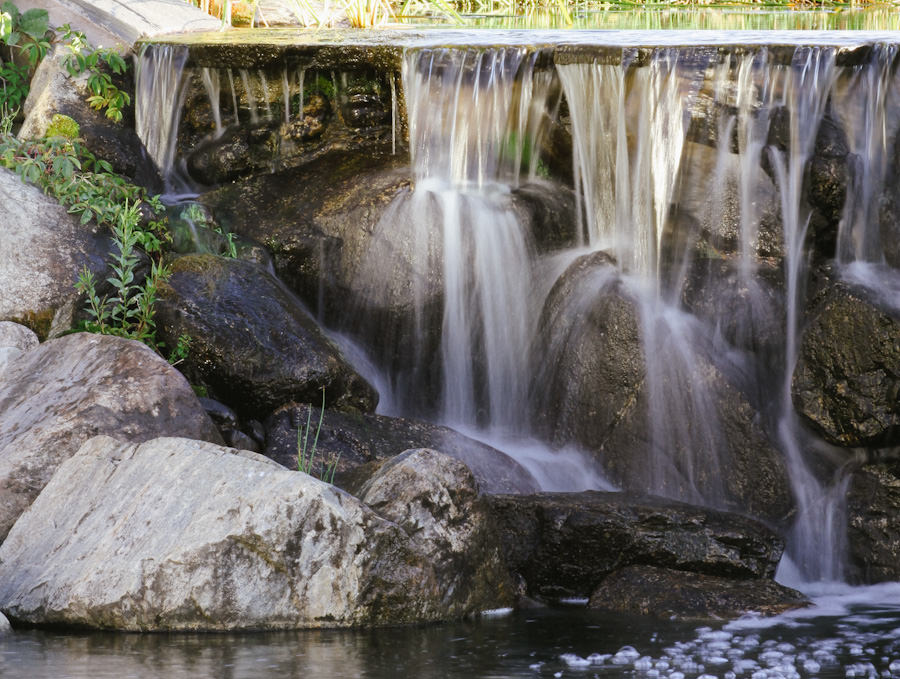
Waterfall Spillway
The easiest way to add a beautiful, even waterfall is with a waterfall spillway such as the AquaScape Waterfall Spillway. This unit spreads the water out evenly, creating a smooth, consistent stream of water. The unit is easy to disguise in your landscape and requires minimal set up. To size your waterfall spillway use this rule of thumb: every inch of spillway requires a minimum of 100 gallons of water per hour for a standard waterfall flow. For a more splashy effect you can increase it to 200 gallons per inch of waterfall spillway per hour.
Example: On a 12” spillway, pump an average of 1200 gallons per hour

Pond Liner
A pondless waterfall requires two liners: one for the waterfall and one for the underground basin. To size the waterfall determine the length and width of the stream and then add extra length to allow the liner to overhang into the basin. Extra liner will also be required to sit underneath the waterfall spillway - where it will see secured to the back inlet. The basin holds the water needed to circulate through the waterfall. As a result, be careful to ensure it is large enough that all the water will fall into the basin without splashing out.
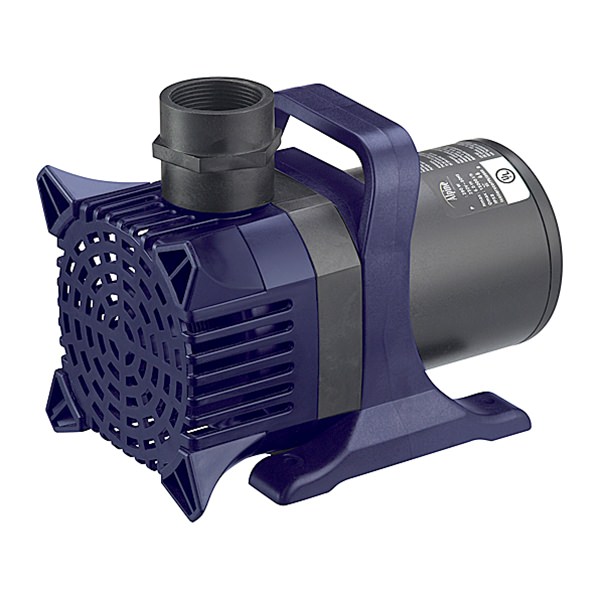
Pump
The submersible pump circulates the water from the basin up to the top of the waterfall. To size a pump for this project you first must determine the width and height of your waterfall as well as the head pressure it will create. As mentioned previously you can use our waterfall rule of thumb: pump 100 gph of water per inch of waterfall spillway. A waterfall that is 5’ high with a 12" spillway would need a pump that can produce a minimum of 1200 gallons per hour at 5’ of head pressure.
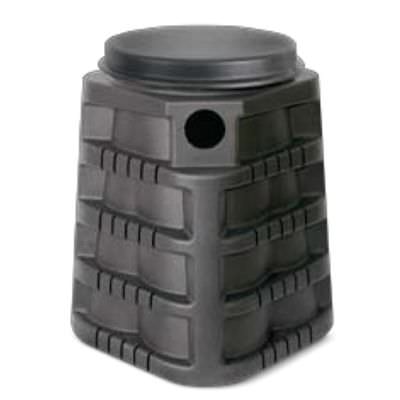
Pump Vault
The pondless waterfall is designed to create a disappearing flow of water, which requires the pump to be hidden in the underground water basin. To make maintenance of the pondless waterfall easier, we recommend using a pump vault. A pump vault is a box that houses the pump within the basin. The pump vault helps keep any rocks or other debris from being sucked into the pump. This structure allows the pump to be easily taken out of the pond without disturbing the gravel.
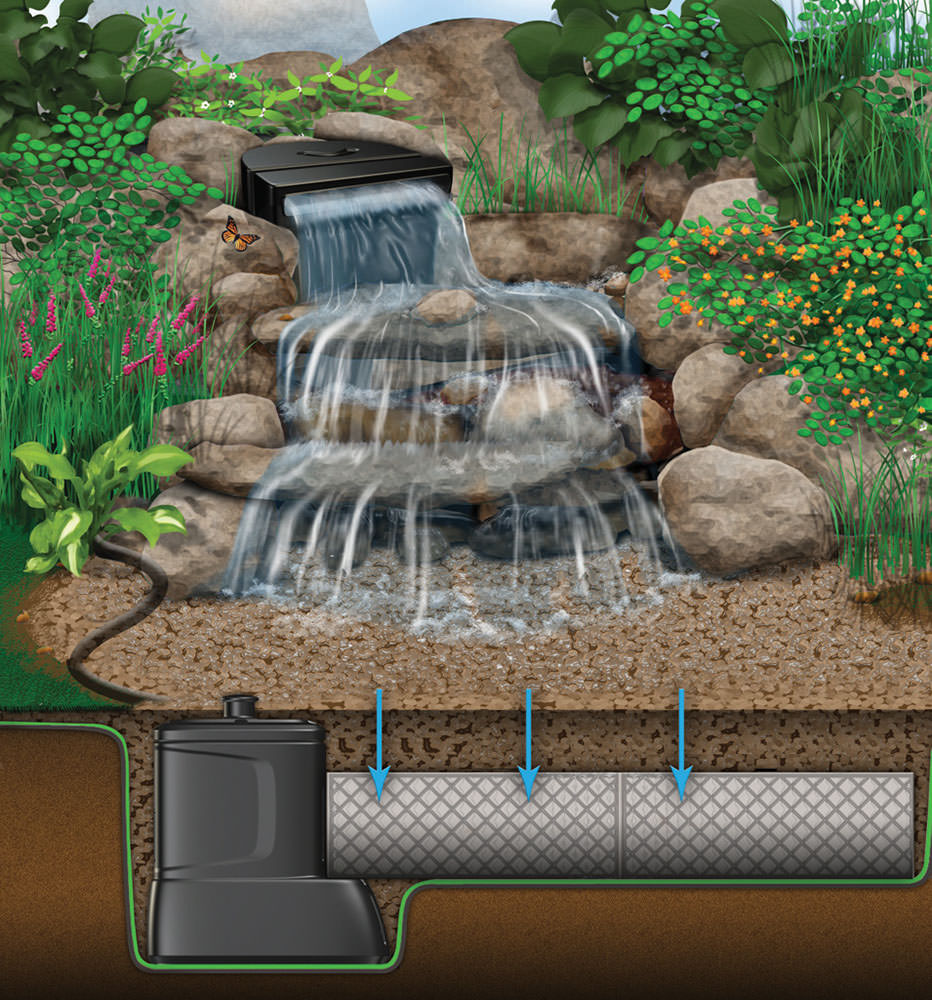
Basin Structure
Once the waterfall is completed it will give the appearance that the water disappears into the ground. This look is achieved by creating an underground water collection basin. We recommend using AquaBlox for this structure as they are easy to install and extremely durable. AquaBlox are quite strong allowing the user to walk right up to the waterfall without worry of the basin collapsing. Alternatively, you could use regular crates but you aren’t going to get the same long term reliability. When designing the basin, measure the pump vault and create a deeper level for it to site on. Adding the pump vault to the lowest point in the basin ensures it will continue to run even when the water level drops due to evaporation. Use a liner to keep the water contained.
Accessories
In addition to the main equipment, you will need a sealant to combine all the parts, piping and the appropriate adapter fittings.
Sizing
After deciding on the location of the waterfall within your landscape, measure out the space for the waterfall. Be sure to account for the space taken up by the basin. Once you determine this you can begin by choosing your waterfall width, followed by the total height. Once you know the size of the feature, choose a pump and AquaBlox to suit the size of waterfall you’d like to create. Determining the size of the basin can be a bit tricky and it may include some trial and error when building. To help prevent problems when sizing your equipment we've created a small pondless waterfall kit to make creating your dream water feature easier.
